Springer Series in Statistics
Advisors:
P. Bickel, P. Diggle, S. Fienberg, U. Gather,
I. Olkin, S. Zeger
�
J.O. Ramsay
B.W. Silverman
Functional Data Analysis
Second Edition
With 151 Illustrations
�
J.O. Ramsay
Department of Psychology
University of Montreal
Montreal, Quebec H3A 1B1
Canada
ramsay@psych.mcgill.ca
B.W. Silverman
St. Peter’s College
Oxford OX1 2DL
United Kingdom
bernard.silverman@spc.ox.ac.uk
Library of Congress Control Number: 2005923773
Printed on acid-free paper.
ISBN-10: 0-387-40080-X
ISBN-13: 978-0387-40080-8
© 2005 Springer Science+Business Media, Inc.
All rights reserved. This work may not be translated or copied in whole or in part without the
written permission of the publisher (Springer Science+Business Media, Inc., 233 Spring St., New
York, NY 10013, USA), except for brief excerpts in connection with reviews or scholarly analysis.
Use in connection with any form of information storage and retrieval, electronic adaptation, com-
puter software, or by similar or dissimilar methodology now known or hereafter developed is for-
bidden.
The use in this publication of trade names, trademarks, service marks, and similar terms, even if
they are not identified as such, is not to be taken as an expression of opinion as to whether or not
they are subject to proprietary rights.
Printed in the United States of America.
(MP)
9 8 7 6 5 4 3 2 1
springeronline.com
�
J.O. Ramsay
Department of Psychology
McGill University
Montreal, Quebec H4A 1B1
Canada
ramsay@psych.mcgill.ca
B.W. Silverman
St. Peter’s College
Oxford OX1 2DL
United Kingdom
bernard.silverman@spc.ox.ac.uk
Library of Congress Control Number: 2005923773
Printed on acid-free paper.
ISBN-10: 0-387-40080-X
ISBN-13: 978-0387-40080-8
© 2005 Springer Science+Business Media, Inc.
All rights reserved. This work may not be translated or copied in whole or in part without the
written permission of the publisher (Springer Science+Business Media, Inc., 233 Spring St., New
York, NY 10013, USA), except for brief excerpts in connection with reviews or scholarly analysis.
Use in connection with any form of information storage and retrieval, electronic adaptation, com-
puter software, or by similar or dissimilar methodology now known or hereafter developed is for-
bidden.
The use in this publication of trade names, trademarks, service marks, and similar terms, even if
they are not identified as such, is not to be taken as an expression of opinion as to whether or not
they are subject to proprietary rights.
Printed in the United States of America.
(MP)
9 8 7 6 5 4 3 2 1
springeronline.com
�
Preface to the Second Edition
This book continues in the footsteps of the First Edition in being a snap-
shot of a highly social, and therefore decidedly unpredictable, process. The
combined personal view of functional data analysis that it presents has
emerged over a number of years of research and contact, and has been
greatly nourished by delightful collaborations with many friends. We hope
that readers will enjoy the book as much as we have enjoyed writing it,
whether they are our colleagues as researchers or applied data analysts
reading the book as a research monograph, or students using it as a course
text.
As in the First Edition, live data are used throughout for both motivation
and illustration, showing how functional approaches allow us to see new
things, especially by exploiting the smoothness of the processes generating
the data. The data sets exemplify the wide scope of functional data analysis;
they are drawn from growth analysis, meteorology, biomechanics, equine
science, economics and medicine.
“Back to the data” was the heading to the last section of the First Edi-
tion. We did not know then how well those words would predict the next
eight years. Since then we have seen functional data applications in more
scientific and industrial settings than we could have imagined, and so we
wanted an opportunity to make this new field accessible to a wider reader-
ship than the the first volume seemed to permit. Our book of case studies,
Ramsay and Silverman (2002), was our first response, but we have known
for some time that a new edition of our original volume was also required.
We have added a considerable amount of new material, and considered
carefully how the original material should be presented. One main objec-
�
vi
tive has been, especially when introducing the various concepts, to provide
more intuitive discussion and to postpone needless mathematical terminol-
ogy where possible. In addition we wanted to offer more practical advice
on the processing of functional data. To this end, we have added a more
extended account of spline basis functions, provided new material on data
smoothing, and extended the range of ways in which data can be used
to estimate functions. In response to many requests, we have added some
proposals for estimating confidence regions, highlighting local features, and
even testing hypotheses. Nevertheless, the emphasis in the revision remains
more exploratory and confirmatory.
Our treatment of the functional linear model in the First Edition was
only preliminary, and since then a great deal of work has been done on
this topic by many investigators. A complete overhaul of this material was
called for, and the chapters on linear modelling have been completely re-
worked. On the other hand, our coverage of principal components analysis
and canonical correlation still seems appropriate, and not much has been
changed. Readers reacted to the later chapters on differential equations as
being difficult, and so we have tried to make them a friendlier place to be.
In some places we have opted for an ‘intuitive’ rather than ‘rigorous’
approach. This is not merely because we want our book to be widely acces-
sible; in our view the theoretical underpinnings of functional data analysis
still require rather more study before a treatment can be written that will
please theoreticians. We hope that the next decade will see some exciting
progress in this regard.
We both believe that a good monograph is a personal view rather than a
dry encyclopedia. The average of two personal views is inevitably going to
be less ‘personal’ than either of the two individual views, just as the average
of a set of functions may omit detail present in the original functions. To
counteract this tendency, we have ensured that everything we say in our
informal and intuitive discussion of certain issues is the view of at least one
of us, but we have not always pressed for unanimous agreement!
We owe so much to those who helped us to go here. We would like to
repeat our thanks to those who helped with the First Edition: Michal Abra-
hamowicz, Philippe Besse, Darrell Bock, Catherine Dalzell, Shelly Feran,
Randy Flanagan, Rowena Fowler, Theo Gasser, Mary Gauthier, Vince
Gracco, Nancy Heckman, Anouk Hoedeman, Steve Hunka, Iain Johnstone,
Alois Kneip, Wojtek Krzanowski, Xiaochun Li, Kevin Munhall, Guy Na-
son, Richard Olshen, David Ostry, Tim Ramsay, John Rice and Xiaohui
Wang. We also continue our grateful acknowledgement of financial support
from the Natural Science and Engineering Research Council of Canada, the
National Science Foundation and the National Institute of Health of the
USA, and the British Engineering and Physical Sciences Research Council.
The seed for the First Edition, and therefore for the Revised Edition as
well, was planted at a discussion meeting of the Royal Statistical Society
�
vii
Research Section, where one of us read a paper and the other proposed the
vote of thanks, not always an occasion that leads to a meeting of minds!
Turning to the Second Edition, Sofia Mosesova and Yoshio Takane read
the entire manuscript with an eye to the technical correctness as well as the
readability of what they saw, and caught us on many points. David Camp-
bell helped with the literature review that supported our “Further readings
and notes” sections. Time spent at the University of British Columbia made
possible many stimulating conversations with Nancy Heckman and her col-
leagues. A discussion of many issues with Alois Kneip as well his hospitality
for the first author at the University of Mainz was invaluable. The oppor-
tunity for us to spend time together afforded by St Peter’s College and the
Department of Statistics at Oxford University was essential to the project.
April 2005
Jim Ramsay & Bernard Silverman
�
Contents
Preface to the Second Edition
1 Introduction
1.1 What are functional data? . . . . . . . . . . . . . . . . .
Functional models for nonfunctional data . . . . . . . . .
1.2
Some functional data analyses . . . . . . . . . . . . . . .
1.3
The goals of functional data analysis
1.4
. . . . . . . . . . .
1.5
The first steps in a functional data analysis . . . . . . . .
1.5.1 Data representation: smoothing and interpolation
1.5.2 Data registration or feature alignment
. . . . . .
1.5.3 Data display . . . . . . . . . . . . . . . . . . . . .
1.5.4 Plotting pairs of derivatives
. . . . . . . . . . . .
Exploring variability in functional data . . . . . . . . . .
1.6.1 Functional descriptive statistics . . . . . . . . . .
1.6.2 Functional principal components analysis . . . . .
1.6.3 Functional canonical correlation . . . . . . . . . .
Functional linear models . . . . . . . . . . . . . . . . . .
Using derivatives in functional data analysis . . . . . . .
Concluding remarks . . . . . . . . . . . . . . . . . . . . .
1.7
1.8
1.9
1.6
2 Tools for exploring functional data
2.1
2.2
Introduction . . . . . . . . . . . . . . . . . . . . . . . . .
Some notation . . . . . . . . . . . . . . . . . . . . . . . .
2.2.1
Scalars, vectors, functions and matrices . . . . . .
v
1
1
5
5
9
11
11
12
13
13
15
15
15
16
16
17
18
19
19
20
20
�
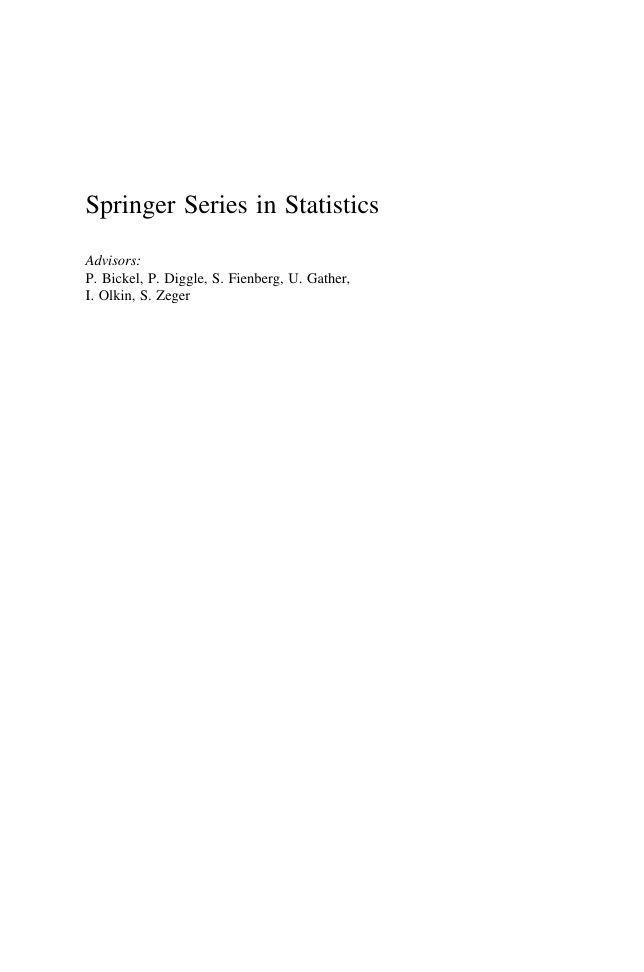
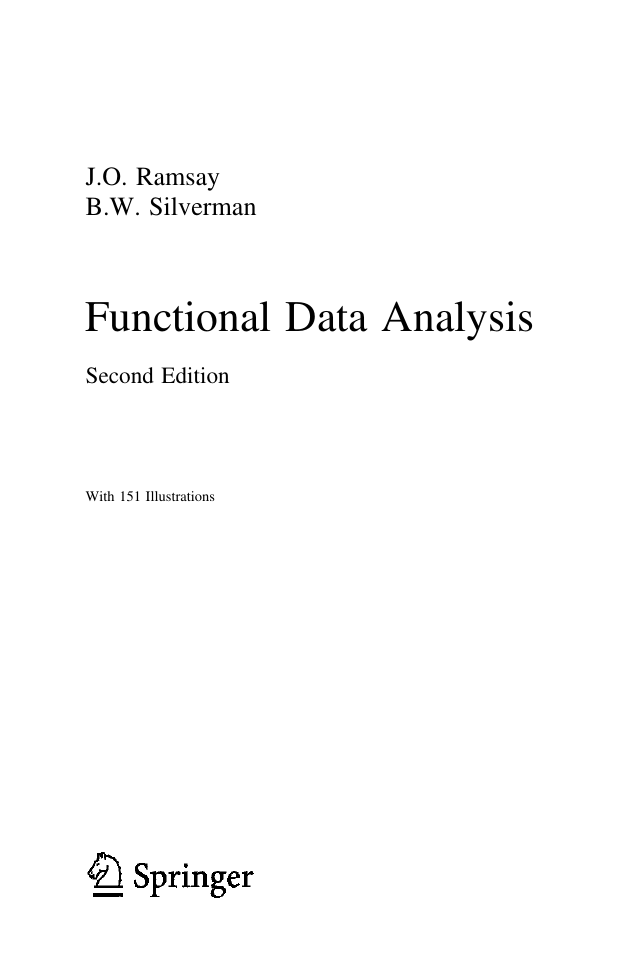


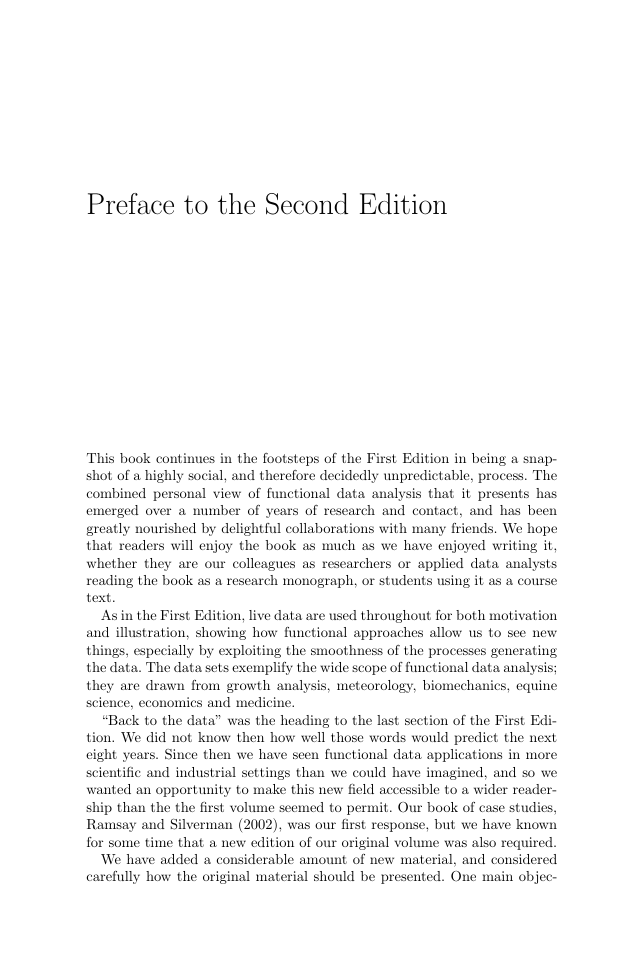
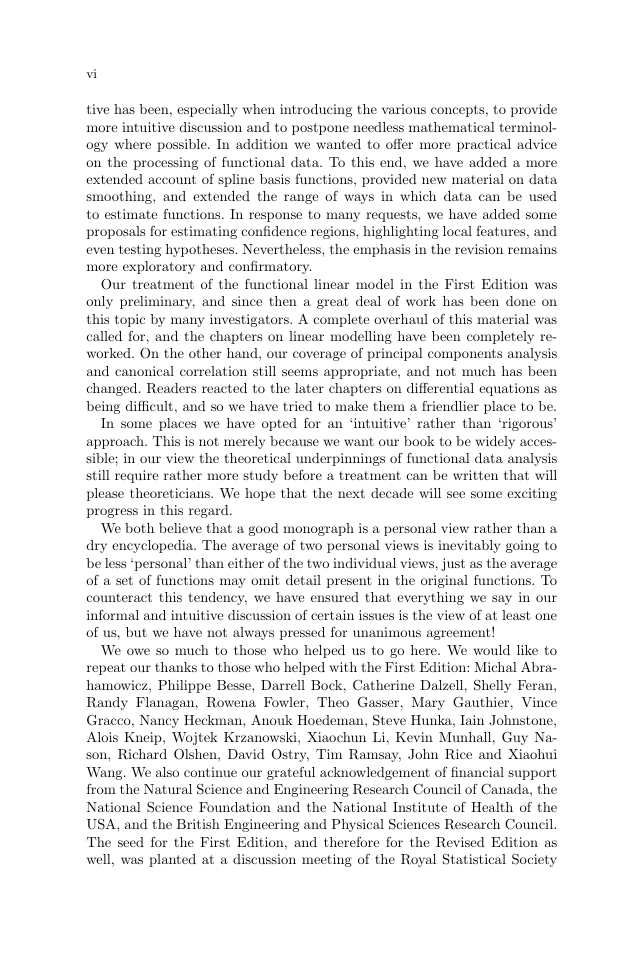
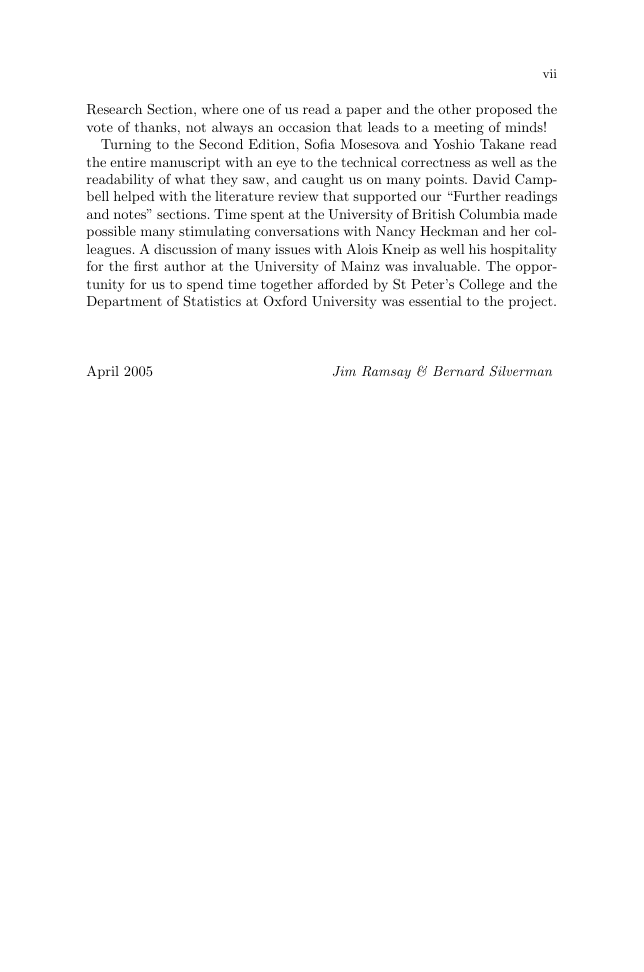
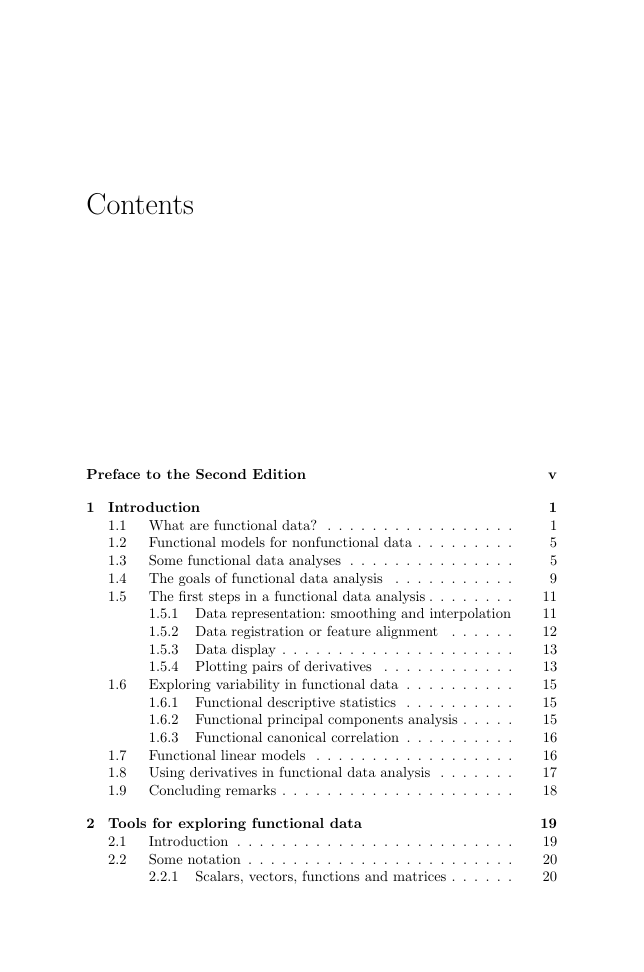








 2023年江西萍乡中考道德与法治真题及答案.doc
2023年江西萍乡中考道德与法治真题及答案.doc 2012年重庆南川中考生物真题及答案.doc
2012年重庆南川中考生物真题及答案.doc 2013年江西师范大学地理学综合及文艺理论基础考研真题.doc
2013年江西师范大学地理学综合及文艺理论基础考研真题.doc 2020年四川甘孜小升初语文真题及答案I卷.doc
2020年四川甘孜小升初语文真题及答案I卷.doc 2020年注册岩土工程师专业基础考试真题及答案.doc
2020年注册岩土工程师专业基础考试真题及答案.doc 2023-2024学年福建省厦门市九年级上学期数学月考试题及答案.doc
2023-2024学年福建省厦门市九年级上学期数学月考试题及答案.doc 2021-2022学年辽宁省沈阳市大东区九年级上学期语文期末试题及答案.doc
2021-2022学年辽宁省沈阳市大东区九年级上学期语文期末试题及答案.doc 2022-2023学年北京东城区初三第一学期物理期末试卷及答案.doc
2022-2023学年北京东城区初三第一学期物理期末试卷及答案.doc 2018上半年江西教师资格初中地理学科知识与教学能力真题及答案.doc
2018上半年江西教师资格初中地理学科知识与教学能力真题及答案.doc 2012年河北国家公务员申论考试真题及答案-省级.doc
2012年河北国家公务员申论考试真题及答案-省级.doc 2020-2021学年江苏省扬州市江都区邵樊片九年级上学期数学第一次质量检测试题及答案.doc
2020-2021学年江苏省扬州市江都区邵樊片九年级上学期数学第一次质量检测试题及答案.doc 2022下半年黑龙江教师资格证中学综合素质真题及答案.doc
2022下半年黑龙江教师资格证中学综合素质真题及答案.doc